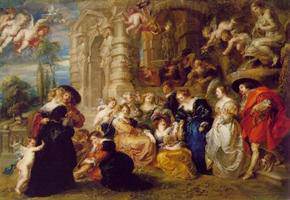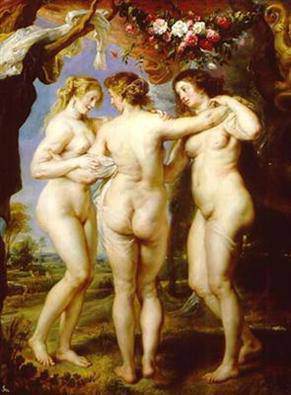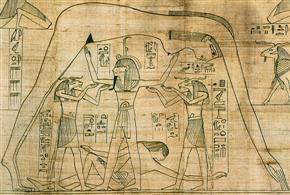
Peter Paul Rubens
Garden of love, c.1630-32

Peter Paul Rubens
The Three Graces, c.1636-38
Museo del Prado closes its 2010 season with exhibition devoted to Rubens Using dramatic juxtapositions, the Museum will be displaying the 90 works that constitute its entire holdings of the artist’s works, which is the most important to be found in a single institution.
November 5th, 2010 – January 23rd, 2011
]]>
Source: Museo del Prado
The arrangement of the exhibition, which is displayed in two large galleries, allows for a clear appreciation of the evolution of Rubens’ style and his manner of approaching large-scale works. In the first room (A) the visitor can see early works by the artist which are notably “Michelangelesque” in style. Here Rubens appears as a great classical sculptor whose aim was to convey the power of forms and their expressive force. Saint George and the Dragon is a perfect example of the monumental style typical of this early period with its strong, solid figures.
Also notable in this room is the great Apostle Series. It includes various canvases that have not been on display in recent years, including Saint Matthew (ca.1610-1612).
Another major series is that of the Torre de la Parada, which occupies part of the second gallery (B). For the first time in over a decade visitors can see the complete series, which was commissioned by Philip IV for a hunting pavilion at El Pardo in the mountains near Madrid. This room also includes works from the last years of Rubens’ career in which he focused on the narrative potential of his compositions and on a desire to convey their poetic content. The landscape of Atalanta and Meleager hunting the Calydonean Boar (ca.1635) is displayed next to Diana and her Nymphs surprised by Satyrs (1638-1640), revealing Rubens’ love of the countryside and his profound empathy with the vitality of nature.
The Prado’s collection of Rubens reflects the thematic diversity to be found in the artist’s work and includes mythological, religious and historical compositions as well as portraits and landscapes. Among these works are some of his greatest masterpieces, such as Saint George and the Dragon (ca.1607), The Adoration of the Magi (1609), Saint Paul (ca.1611), The Garden of Love (ca.1633), The Three Graces (ca.1635), Nymphs and Satyrs (ca.1635), Hercules and Cerberus (ca.1636), Village Dance (1636-1640), Diana and her Nymphs surprised by Satyrs (1638-1640), and Diana and Callisto (1638-1640); ten examples from the astonishing and unique creative universe of the artist who remained Philip IV’s preferred painter until his death and who can be considered one of the greatest painters of all times.
Follow us on:

